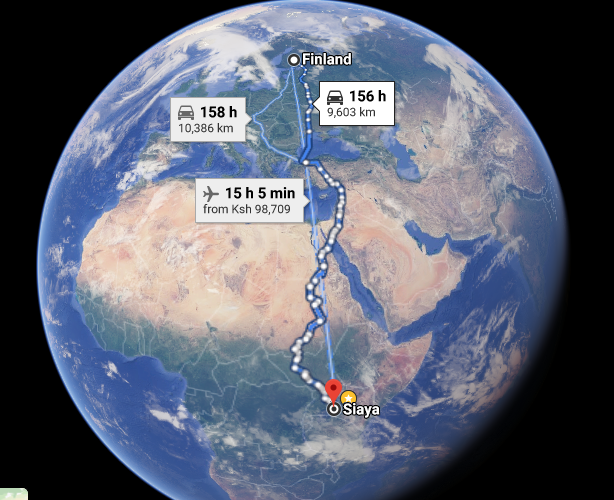Osprey, the bird that flew from Finland to Siaya, expected to ‘return home’ in March

The rare migratory Osprey that flew from Finland to Kenya will 'fly back home' after one month, Kenya Wildlife Service(KWS) has said.
KWS in a statement said that Osprey is under its care and will be fed and observed for a month before being released for its epic return flight Northwards in early March.
Osprey flew over 6,948 kilometres from Finland to Bondo in Siaya where it was rescued.
Current, Osprey is at Kenya Wildlife Service headquarters in Nairobi in a stable condition at a KWS- licensed Raptor Rehabilitation Centre in Karen.
KWS and the Raptor centre plan to feed it back to good health and release it back to the wild from the exact site it was rescued in the Lake Victoria catchment so that the bird of prey does not lose its bearings on the return flight.
Addressing journalists at KWS headquarters on January 24, KWS Research Director, Dr Patrick Omondi said that a licensed raptor specialist is monitoring the condition of the bird.
Osprey was dehydrated from the long flight and minor injuries while trapped by the fishing net.
KWS was notified by Finland that Osprey was ringed in June 2017 and is mature for breeding (The bird’s origin was established from a ring on its leg whose details show that it was ringed in Finland [Museum Zool, Helsinki Finland, www.ring.ac, M-68528]). 
Experts advised that the bird be released not later than March to allow it to navigate back within the migratory period.
KWS commended the local community who acted swiftly to alert wildlife officers.
Kenya is a signatory to the Convention on Migratory Species (CMS), whose conference of parties is to be held next month in India and one of the key mandates is to ensure the conservation of migratory bird species.
Bird-ringing is done in Kenya at Ngulia in Tsavo every other year in October/November, during which migratory birds from Europe are identified.
Whilst bird migration is normal, the particular case of the Osprey is unique because the bird was intercepted in an area not previously known as a migratory route. 
The usual seven catchment areas include Lake Nakuru, Naivasha, Bogoria, Elementaita – but Lake Victoria catchment has never before been thought to be a potential site.
In light of recent developments, KWS calls upon the Siaya County Government to join conservation efforts by protecting the Victoria catchment area, which includes Lake Kanyaboli National Reserve. 
Threats to migratory birds include rapid infrastructural development such as electric wires on migration routes, climate change and pollution.
Kenya Wildlife Service Head of Veterinary Services, Dr. David Ndeereh said birds of prey play a significant role as indicator species of ecosystem health. The deviation of this bird from its usual route could point to an underlying problem, i.e. habitat degradation, low food availability, which causes the birds to veer off route to locate food.
The 950g male bird flew to Kenya, covering a distance of 6,948 kilometres or 4,317 miles to land in Siaya County.
A member of the community, Walter Oloo, reported the bird sighting to the KWS Siaya County team on January 20.
The male bird is of the species Osprey (Pandion haliaetus) also called sea hawk, river hawk and fish hawk.
It is a diurnal, fish-eating bird of prey; a large raptor with a wingspan of 180cm (71in), and 60cm (24in) in length.
Its uniqueness is evident in the fact that it is a long-distance migrant that breeds in Europe and migrates to Africa during the former continent’s harsh winters.
It feeds predominantly on fish; less often on small mammals – usually when fish is unavailable.





